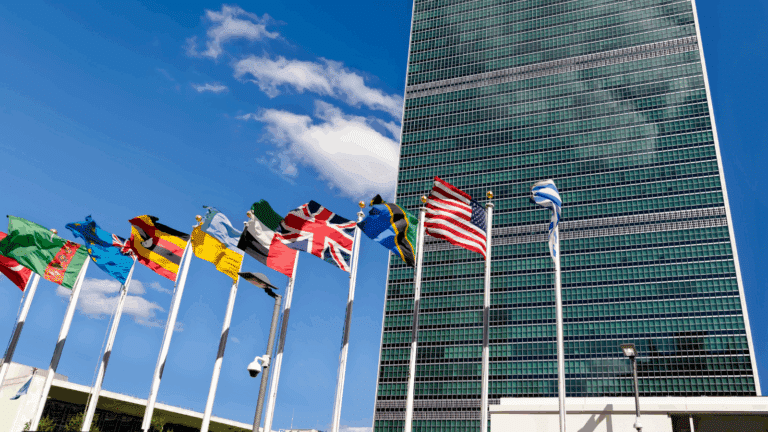The novel coronavirus crisis has increased awareness about the need for sustainable and responsible investment. Once the spread of the virus is effectively contained, through testing and isolation, the world will focus on the recovery phase. But it should not be a return to business as usual. A successful recovery strategy should combine the need to restore income and economic activity while at the same time preventing another catastrophe resulting from the buildup of economic and financial vulnerabilities and policy mistakes (commonly known as white swans). As we enter what could likely be the worst recession since the Great Depression, the level of awareness about the costs of ignoring the physical limits to economic growth will likely increase.
This crisis is revealing how unprepared and vulnerable our socio-economic system is to physical shocks. As opposed to financial shocks, like the ones that caused the global financial crisis over a decade ago, physical shocks originate from ecological and social constraints that, when violated, generate an economic collapse. Thanks to advancements in the natural and social sciences, we are now in a better position to understand their underlying causes, and in some cases assess their likelihood. Mitigating this class of tail-risks is not just possible, it has never been more relevant and urgent. One effective way to do that is to allocate capital intelligently.
Although insufficient alone, the use of environmental, social, and governance (ESG) finance is one way to ensure that the post-Covid-19 period does not breed another such experience. Greater focus on sustainable investing, once some normalcy is restored, can reduce the chances that a new physical shock develops into another global crisis.
Of particular concern is climate change. The world will face catastrophic and irreversible heating unless governments and firms shift their priorities soon. According to the UN Intergovernmental Panel on Climate Change,[1] warming should be limited to 1.5 °C above pre-industrial levels, with further warming bringing increasingly worse economic and social consequences. Current warming has already exceeded the 1°C level, and increased climate variability presents an additional stressor for countries and communities that can’t even cope with the climate variation they experience now.
Despite this threat, with today’s low oil prices, market forces will increase the demand for fossil fuels—in sectors such as transportation and power generation—relative to the more expensive renewable sources. A world with low fossil fuel prices and more carbon emissions is riskier in terms of potential physical shocks, such as climate change. But the pandemic, and its enormous economic costs, should reduce our tolerance toward these risks and increase political support for initiatives that protect the world from increased carbon emissions. Examples of such initiatives proposed in this commentary, if adopted, would result in more financial resources to fund climate-smart projects.
But this will not happen unless there is some form of government intervention. From a policy perspective, ESG metrics should be incorporated in the recovery packages being adopted globally. At a time when markets are reluctant to allow very high public debt-to-GDP ratios to increase even further, sustainable government debt with earmarked investments to lower greenhouse gas emissions, improve health-care systems, and reduce inequality would ease market access. This is a unique opportunity to incorporate sustainability factors that reorient development financing toward low-risk pathways. To complement this, financial regulators should require a clear, consistent, and comparable way of communicating nonfinancial information to financial markets, not just in projects sponsored by governments but also those entirely in the hands of the private sector.
Some Preliminary Lessons from Covid-19
The Covid-19 pandemic caught the entire world unprepared. Virtually every country is confronting underfunded health care, nonexistent or insufficient social safety nets for vulnerable populations facing higher risks of being infected, and struggling businesses. At the same time, governments have limited fiscal space to accommodate the type of response needed, while multilateral and national development banks do not have enough capital to lend the amount required to improve health-care systems and mitigate the economic and financial losses of the pandemic.
Collectively, the world failed to internalize a physical risk of this type and magnitude. Conventional risk analysis may prepare governments, investors, corporations, and individuals for financial shocks, but it has left all actors blindsided by physical risks. The consequences of ignoring this class of risks could not have been more devastating. As governments race to strengthen health-care systems to treat the virus and improvise fiscal stimulus packages to prevent companies and households from running out of cash, and central banks roll out measures to rapidly inject liquidity, it seems that no measure is sufficient to mitigate the immediate impacts of the crisis.
We could have been better prepared for this shock. In 2007, a group of researchers from the University of Hong Kong published a study that examined the 2002-03 SARS outbreak and concluded that “the presence of a large reservoir of SARS-CoV-like viruses in horseshoe bats, together with the culture of eating exotic mammals in southern China, is a time bomb.”[2] A recent report suggested that pushing the urban and agricultural frontier deeper into the world’s most biodiverse regions could have been one of the factors that led to Covid-19.[3] Whether this was the case or not is still subject to debate, but what few doubt is that we failed to adequately assess risks. Moreover, global supply chains have made the world more interdependent and vulnerable to disruptions such as the ones caused by the pandemic—the collapse of international trade rapidly propagates the economic effects of physical shocks.
In 2012, a report by the National Intelligence Council, the center for mid- and long-term strategic thinking within the US Intelligence Community, laid out various events that could be categorized as white swans.[4] Among them was the likelihood of a severe global pandemic in the following 15 years. The report underscored other white swan events, such as more rapid and severe climate change (known as a green swan event), social unrest from inequality, and solar geomagnetic storms, to name a few.
Of course, given the high levels of uncertainty associated with the specific timing or outcome of each event, no one expects that intelligence reports or scientific research papers can provide exact predictions on physical risks. But it is worth asking: How might the world have better prepared knowing a global pandemic could shut down business for several months? If we would have stress tested governments’, corporations’, and investors’ portfolios against white swan events, would the current headlines in the world’s newspapers be any different? If anything, scientific information on issues such as the boundaries of the “planetary playing field” and the levels of social resilience[5] to cope with external stresses and disturbances should improve preparedness to physical shocks.
This is particularly relevant for developing and emerging economies, which according to the IMF will be hardest hit by the Covid-19 recession. In their case, the sudden interruption of economic activity resulting from lockdowns, together with the collapse of domestic and external demand, is compounded by portfolio capital outflows.[6] The Institute of International Finance estimates that a “flight to quality” away from emerging markets has been US$100 billion, almost three times the outflows during the 2008 financial crisis. This magnitude of loss in low- and middle-income countries sheds light on a contradiction that must shape the post-Covid-19 financial recovery process: poorer countries shoulder the largest share of the burden of global physical risks, while at the same time are the least prepared to systematically mitigate them.
The Role of ESG Finance
In preparation for an eventual recovery, and to prevent the next physical shock, a return to “business as usual” is not the desired course. Are governments, companies, and investors adopting risk-mitigating growth strategies? Or are they continuing to operate in unbounded imaginary worlds where physical shocks are just theoretical?
Incorporating scientific information in financial decision-making is crucial. Specifically, it should become standard to: 1) identify nonfinancial physical risks and 2) internalize those risks by increasing financial costs in activities pushing the boundaries (or, conversely, reward sustainable investments). This is not a silver bullet solution to mitigate future shocks, but it’s certainly an action that will enable public- and private-sector innovation to play their part. If there are enough economic incentives available to projects that mitigate physical risks, there will be more capital allocated to areas that reduce the impact of white swans.
Such efforts would be far from unprecedented. Sustainable investing has been incorporating nonfinancial, particularly ESG metrics, into investment policies for the past 40-odd years. The 1970s saw the creation of the first mutual funds reflecting faith-based values, civil rights-era sensibilities, and environmental concerns.[7] Since then, and especially after the 2008 financial crisis, a boom in sustainable investing has been driven by cultural changes and civil society activism in particular around climate action. According to Bloomberg, annual global issuance of sustainable debt increased from a mere $15 billion in 2013 to $465 billion at the end of 2019, a significant number yet only 6 percent of the total global debt issuance last year.
In January 2020, BlackRock, the world’s largest fund manager with $7 trillion in assets, announced it will double the number of sustainability-focused exchange-traded funds (ETFs) it offers to 150.[8] It also plans to divest from companies in the coal sector while increasing its sustainable assets tenfold from $90 billion today to $1 trillion by 2030. As the announcement claims, “sustainability- and climate-integrated portfolios can provide better risk-adjusted returns to investors.”
In fact, this is the conclusion of a 2015 meta-analysis of 2,200 ESG research studies by the University of Hamburg.[9] In 90 percent of the studies analyzed, there was a positive relationship (or at least a nonnegative one) between corporate financial performance and certain nonfinancial metrics, such as carbon footprint and gender diversity. For example, an energy company with a low carbon footprint, high levels of gender diversity, and both transparent and ethical business practices would be less exposed to risks associated with new carbon pricing schemes, low-gender-diversity and gender-based discrimination litigation, and inadequate corporate governance. These nonfinancial factors would then be translated into lower volatility and better returns for investors in the long run.[10] As a Barron’s piece in 2019 noted, the superior nonfinancial performance of sustainable businesses has proven key in reducing volatility and providing resilience in downturn scenarios when compared to conventional businesses following a profit-only model.[11]
The Covid-19 shock induced the fastest correction in the S&P 500 index on record,[12] and while capital fled to safety, analysts note that “flows into ESG ETFs both on fixed-income and equities have held up better versus the market.”[13] While it is still too early to judge whether sustainable businesses will fare better during the current crisis, ESG appears to be an effective way of mitigating structural risks.
Reducing a company or a government’s environmental impact as well as improving its social performance and governance practices, will be even more important in the post-Covid-19 era, as investors will increasingly focus on minimizing the fragility of a system and therefore internalize the social costs and benefits of investment plans.
The Road Ahead
The post-Covid-19 recovery roadmap should be less about normalization—getting back to where the world was—and more about adaptation to a much more uncertain future. The current shock may be sufficient to prepare us to face the next pandemic, but it may not necessarily prepare us for other white or green swans.
However promising, there are limitations to what sustainable investing can screen against or guarantee today. It’s not feasible to measure every single nonfinancial metric. What metrics truly address sources of physical risk? Is there a standard definition of what “sustainable” and “social” actually mean and how far they reach? What is a “sustainable” investment time frame? How is ESG applied to sovereign actors? These are all questions yet to be conclusively answered. But with all its limitations, renewed emphasis on ESG finance is the best option the world has to avoid major reversals in well-being.
Hindering ESG finance are a lack of common standards and the fact that data disclosure is voluntary. There is no consensus on what exactly makes an investment sustainable or which sustainability indicators best account for systemic and physical risk within an investment.
A recent announcement by the European Securities and Markets Authority on the creation of guidelines on ESG disclosure and reporting is one step in the right direction.[14] By aiming to create a common language and taxonomy for sustainable finance and requiring financial market participants to disclose the degree of environmental sustainability of their products, the European Union is leading the path in this revolution. The momentum exists, but if the present crisis teaches us anything, it is that decisive action is needed not only at a faster rate but also at a global scale. Consistent, transparent, and comparable ESG standards should be promoted around the world by the Financial Stability Board and the Bank of International Settlements.
One of the main obstacles facing investors when accounting for shocks like climate change is a market failure known as the Tragedy of the Horizons, meaning that “short-term horizons in financial markets limit the effective transmission of long-term risk signals and, as such, inhibit a more efficient long-term allocation of capital.” [15] The most extreme effects of climate change may be realized 10 years from now, but they will be shaped by the way we allocate capital in the present. What this means is that without some decisive action, this market failure will not be corrected. Governments need to intervene by adjusting financial regulation such that financial projections consider volatile, long-term, nonfinancial factors such as carbon pricing, climate-related supply chain disruptions, and shifts in consumer demand, all of which may change the underlying economics of a business model that may seem profitable in the short term but is inviable in the long term.
The main lesson is that standardized, widespread accounting of potential future shocks in corporate and government decision-making, including on climate change, is needed. This will encourage private-sector innovation, help us to stay within our planetary boundaries, and increase our levels of social resilience against the risks ahead.
Notes
[1] https://www.ipcc.ch/about/.
[2] https://cmr.asm.org/content/cmr/20/4/660.full.pdf.
[3] https://www.nature.com/articles/s41562-020-0852-7.pdf?draft=collection.
[4] https://www.dni.gov/files/documents/GlobalTrends_2030.pdf.
[5] https://journals.sagepub.com/doi/abs/10.1191/030913200701540465.
[6] https://www.imf.org/en/News/Articles/2020/04/07/sp040920-SMs2020-Curtain-Raiser.
[7] https://www.bailard.com/wp-content/uploads/2017/06/Socially-Responsible-Investing-History-Bailard-White-Paper-FNL.pdf?pdf=SRI-Investing-History-White-Paper.
[8] https://www.ft.com/content/57db9dc2-3690-11ea-a6d3-9a26f8c3cba4.
[9] https://papers.ssrn.com/sol3/papers.cfm?abstract_id=2699610&mod=article_inline.
[10] https://www.unpri.org/Uploads/g/t/y/ESG-Factors-and-Risk-Adjusted-Performance.-A-New-Quantitative-Model.pdf.
[11] https://www.barrons.com/articles/recession-esg-investors-51561062809.
[12] https://www.marketwatch.com/story/dow-sp-500-enter-correction-territory-as-stock-market-selloff-rolls-on-for-6th-straight-day-2020-02-27.
[13] https://www.ft.com/content/dd47aae8-ce25-43ea-8352-814ca44174e3.
[14] https://www.esma.europa.eu/sites/default/files/library/esma32-67-642_european_financial_forum_2020_-_12_february_2020_-_speech_steven.pdf.
[15] http://tragedyofthehorizon.com/Tragedy_of_the_Horizons_Project_Briefing_Note-2dii_and_The%20Generation_Foundation.pdf.




